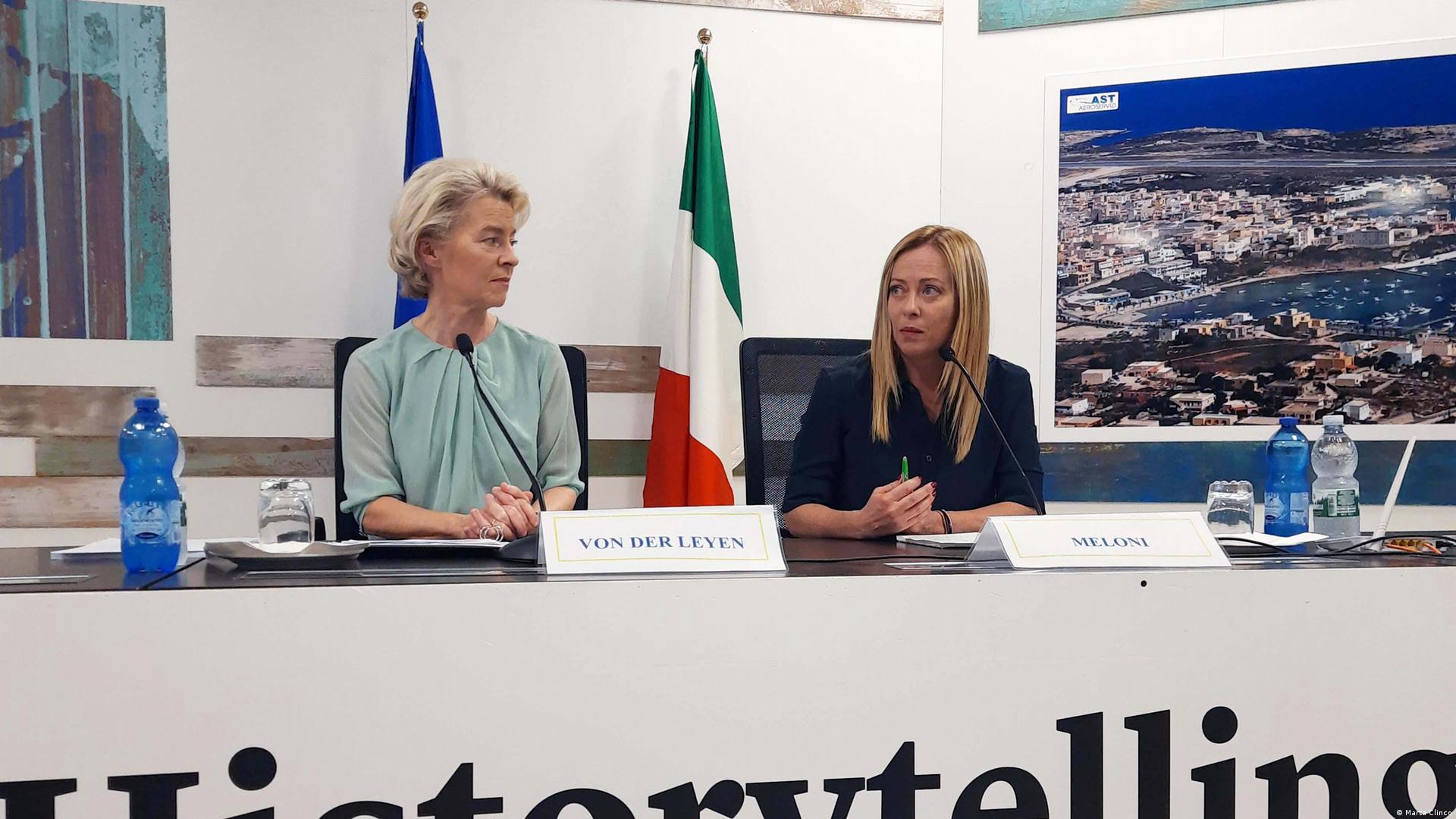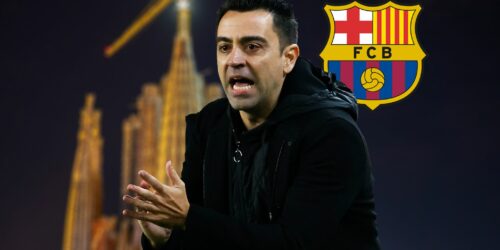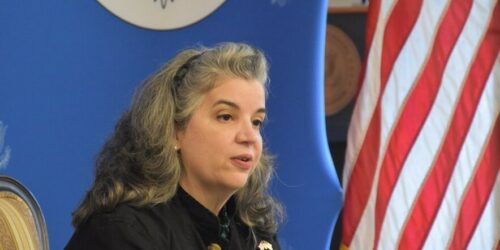During a visit to the island of Lampedusa, Italian Prime Minister Giorgia Meloni and European Commission President Ursula von der Leyen announced plans to address the surge in migrant arrivals.
In the blistering heat of an early September evening, the narrow, rocky lane leading to Contrada Imbriacola, the main migrant reception center on the Italian island of Lampedusa, was filled with Red Cross Italy’s employees busily clearing the way for the arrival of Italian Prime Minister Giorgia Meloni and European Commission President Ursula von der Leyen.
Over the past week, more than 7,000 migrants have arrived in Lampedusa on flimsy boats from Tunisia. More continue to reach its shores. One of Italy’s Pelagie Islands located in the Mediterranean Sea between Tunisia and Malta, Lampedusa has a local population of around 6,000. The migrant reception center only has capacity for 400 migrants, prompting the local authorities to declare a state of emergency.
On Sunday morning, Meloni, together with von der Leyen and the European Commissioner for Home Affairs Ylva Johansson, arrived at the reception center to review the situation. Asked by journalists whether the arrival of thousands of migrants was problematic for Lampedusa and a solution would be found, Meloni responded affirmatively: “I’m working on that,” she said as she walked into the center for a visit that lasted just a few minutes.
Meloni and the EU officials witnessed a relatively orderly state of affairs, very different to the situation a day earlier when thousands of migrants were gathered in and around the center in a desperate state. Some asked for food and water, others worried about where they would be taken to next or how long they would have to continue living in these sordid conditions.
“The situation in the center is not too good because it’s too crowded to even get food,” a young female arrival from Sierra Leone told DW. “If you don’t fight, you don’t have food. Even taking a shower is a problem. We had almost 9,000 people here, but now they have started moving people elsewhere,” she added.
10-point action plan for Lampedusa
Meloni, of the far-right Brothers of Italy party, stressed that the “challenge of the massive flow of immigrants” must be addressed at a pan-European level. “If somebody here in Europe were to think that this crisis that we are tackling and facing could just be solved within Italian borders, then it would be a very big and huge mistake,” she said at a press conference at Lampedusa airport, after her visit to the center.
Over the past few days, Italian authorities, including the mayor of Lampedusa, have voiced concerns that the country has been left to deal with the crisis on its own. During her visit, the European Commission President announced a 10-point action plan for Lampedusa. “Migration is a European challenge and will receive a European solution,” von der Leyen said.
As part of the plan, the European Union Asylum Agency (EUAA) and the European Border and Coast Guard (Frontex) will be deployed to Italy to manage new arrivals. European Commission Vice President Margaritis Schinas would also be sent to some of the migrants’ countries of origin to negotiate ways of managing migration and returns.
The EU has already signed a deal with Tunisia in July to help put an end to migration from North Africa. The European Commission has not yet paid out the €100 million ($106.6 million) included in the deal and EU officials have told journalists that “it is a work in progress.” On Saturday, Tunisian police at the port of Sfax, one of the main points of departure, arrested hundreds of migrants and began cracking down on people smugglers.
According to Roberto Forin, deputy director of the Mixed Migration Centre, a migration research think tank, the current European approach to migration simply is not working. “The situation in Lampedusa is the tragic evidence of this failure. I really don’t see at the moment a political will to change this approach,” he told DW.
Residents feel left alone to shoulder a heavy burden
Meanwhile, for locals, like Antonello di Malta and his mother, helping people should be the heart of any deal. “When I saw [the migrants] I thought about how I would have felt if they were my sons crying and asking for food,” Antonello’s mother told DW. “So I started cooking for them. We Italians were migrants too. We used to also travel from north to south. So we can’t get scared of people and we need to help.”
But some locals are also livid over the government’s handling the situation. On the eve of Melon’s arrival, some residents also held a demonstration against plans by Red Cross Italy to construct an additional migrant reception center. “We feel like we have to be responsible for the millions of young children and women arriving here or dying at sea. We want to help but Europe should be involved too. Lampedusa cannot be the only one dealing with migrants,” one local resident told DW.
Italian Prime Minister Giorgia Meloni and European Commission President Ursula von der Leyen praised the people of Lampedusa for their handling of the situation. “We committed ourselves to try and provide them with better conditions for this island. We’ve already done it through €45 million, which will be helpful to manage the local difficulties they’re dealing with,” Meloni told reporters. She also said she would discuss the situation at October’s European Council meeting.
Asked whether the Italian prime minister visiting the island would change things, another woman from Lampedusa told DW: “Meloni? F*** off. They won’t do anything for us. We are like trash to them in Rome.”
Source: DW News






